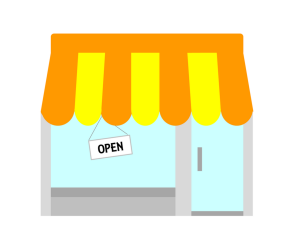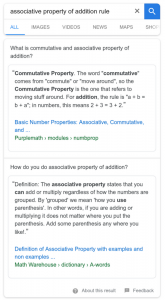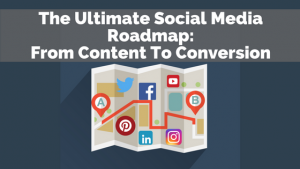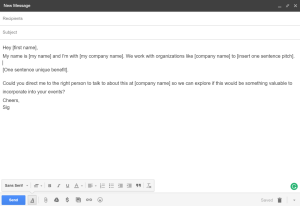— August 14, 2018
For years, hashtags were seen as the holy grail for brands trying to increase engagement on Twitter, Facebook, and Instagram. But with a rapidly changing social media landscape — and new ways of connecting with friends, family, and partners, and customers — businesses are asking if hashtags are heading towards extinction.
The answer: it depends. As social media platforms continuously update their algorithms, hashtags become more or less effective. Hashtags are used by internet surfers to find new or related articles, videos, images and other content. Because content discovery varies significantly across the different platforms, the efficacy of hashtags also differs. Hashtags have become central to the Instagram experience. However, they are fading in relevance on Twitter and Facebook.
We’ll tackle each social media platform separately to give you a clear picture of the state of the hashtag in 2018, as well as some tips for making the most of your hashtag strategy. Read on for details!
Hashtags on Instagram
Hashtags on Instagram? The verdict is in: definitely, yes you should be using hashtags on Instagram. Research shows that posts with at least one hashtag average 12.6% more engagement than posts without a hashtag. In fact, some measurements show an increase of nearly 30% for posts that have hashtags — a huge leap in comparison to those that do not.
Why are hashtags key to winning engagement on Instagram? The platform has made hashtags a cornerstone of their success metrics. Just this year, Instagram deployed new hashtag features including better tracking and visibility, and clickable hashtags in user profiles. Users can now follow hashtags in addition to accounts, as well as add hashtags to Instagram Stories.
Keep in mind that Instagram limits hashtag use to 30 per caption. Try to vary your hashtags so your posts don’t look too spammy. In fact, Instagram’s “shadowban” update actually devalues posts that use the same hashtags over and over again. You can no longer copy and paste the same list of hashtags every time you post content; the algorithm will penalize your posts and show them less. If you’re going to invest time and energy into a hashtag strategy, Instagram is the platform where you should focus your energy.
Hashtags on Twitter
Twitter is the birthplace of the hashtag, and so one might assume that hashtags and tweets will be forever inseparable. That’s still true — with caveats.
The rise of “zero spam” accounts mean marketers need to be intentional and thoughtful about how they use hashtags on Twitter. Zero spam accounts are those accounts that aren’t following anyone, but use general hashtags to tweet and like upwards of 5,000 times in six months. To put that in context, even the most dedicated human tweeters only generate about a third of that content.
The best course of action is to use just one hashtag to get the most engagement. Anything more than one hashtag starts to look spammy, and followers might think your account is a bot (or worse — a hacker!). To figure out what hashtags are going to get you the best response, check out this infographic on how to choose a hashtag.
Hashtags on Facebook
In case you missed recent news headlines, Facebook is going through something of a reckoning when it comes to user privacy and data protection. A casualty of this calculation is the hashtag. Many users already set their profile settings to private, and regardless, the variety of privacy settings across the platforms makes hashtags mostly irrelevant for content discovery.
Because Facebook users build their community through known contacts, content sharing is limited among small clusters of profiles. This makes it extremely difficult to reach new audiences with hashtags. The best practice for using hashtags on Facebook is to do so selectively. Brands that can use hashtags unobtrusively (think: #MotivationMonday or hashtags specific to an ongoing branded campaign) will do better than “shot in the dark” hashtags.
If hashtags are heading toward extinction on any platform, it’s Facebook. Concentrate on your other social media assets before investing lots of time in a Facebook-specific hashtag strategy.
Hashtags on LinkedIn
Surprisingly, LinkedIn might be one of the best social media platforms for hashtag use in 2018. The platform has been testing hashtag use on-and-off for two years, and currently rewards content that uses hashtags with better visibility. LinkedIn users can include a hashtag on a status update to make it easy to connect with others posting similar updates. Anyone interested in finding new articles or updates on capacity planning can easily search #capacityplanning and get to learning. LinkedIn will also autofill hashtags as you add more and more letters, in case you can’t quite remember the phrase you’re looking for.
Naturally, hashtags on LinkedIn are most successful when they are business-oriented. Though marketers might not achieve the same goals on LinkedIn than with other social media platforms, these hashtags are still a great tool for content discovery. Consider using company names, milestones (e.g., #workanniversary), or events (e.g., #MozCon2018) in LinkedIn status updates to gain better engagement on your posts.
The social media sphere is constantly changing. While the hashtag isn’t extinct yet, the way marketers should use hashtags continues to evolve.
Digital & Social Articles on Business 2 Community
(72)








